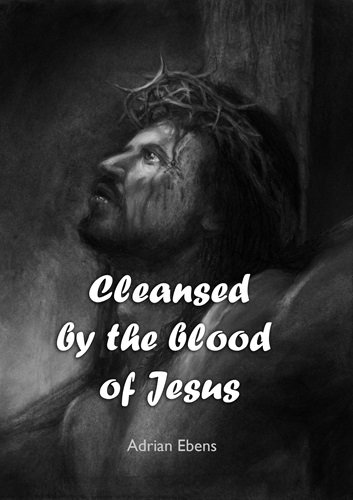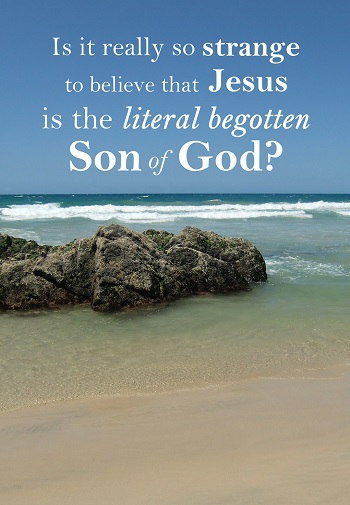The Seventh Month Movement and Validity of October 22, 1844
“But thou, O Daniel, shut up the words, and seal the book, even to the time of the end: many shall run to and fro, and knowledge shall be increased.” - (Daniel 12:4 KJV)
“And he said unto me, Unto two thousand and three hundred days; then shall the sanctuary be cleansed.” - (Daniel 8:14 KJV)
“Also on the tenth day of this seventh month there shall be a day of atonement: it shall be an holy convocation unto you; and ye shall afflict your souls, and offer an offering made by fire unto the LORD.” - (Leviticus 23:27 KJV)
The history of the Millerite movement is a fascinating account of how our Father in heaven directed men and women to study the Scripture relating to Daniel and Revelation thus preparing a people to proclaim the three angel’s messages to the world. Through these studies a prophetic time chart was introduced that culminated in the 2300 day prophecy of Daniel ending somewhere between March 21, 1843 and March 21, 1844 with the second coming of Jesus. When March 21, 1844 came and went without the return of Jesus the Millerites returned to Scripture for intense study and soul searching, leading to repentance, revival and reformation.
“From the beginning of their preaching, William Miller and the ministers associated with him believed not only that they were reviving a long-neglected and primary truth of the Christian religion, the truth of the personal coming of Christ, but that they were fulfilling the prophecy of the angel described in Revelation 14:6, 7, who proclaimed with a loud voice: “Fear God, and give glory to him; for the hour of his judgment is come.” It was this conviction, coupled with a sense of the gravity of the Advent doctrine they were preaching, that gave to leaders and [believers] alike a crusading zeal, a sacrificial devotion, and an unremitting ardor in the propagation of the doctrine of the personal, literal coming of Christ. The preaching in the summer of 1844 only intensified that ardor.” (Francis D. Nichol, Ellen G. White and Her Critics)
“[This crescendoed into] what became known as the “seventh-month movement,” so-called because October 22 was the tenth day of the seventh month, Karaite Jewish reckoning. This was a movement within the larger movement, for it did not at first have the support of the principal leaders. William Miller, Joshua V. Himes, Josiah Litch, and others who had been in the forefront of the Millerite movement since it first had taken definite shape, looked on uncertainly at first, though they did not oppose. As a matter of fact, they did not accept the October 22 date until within a very few weeks of that time.” (Ibid)
“The seventh-month movement rapidly became the dominant feature of the whole Advent movement. On every side was heard with new emphasis, and with a now specifically timed element, the cry, “Behold the bridegroom cometh, go ye out to meet Him.”” (Ibid)
A landmark date, October 22, 1844 was calculated and set for the “True Midnight Cry.” Once again the expected second coming did not happen, and the day became known as “The Great Disappointment.” Faith was put to the test and those who stood firm continued to delve into the Word to find a reason for the delay. The Seventh-day Adventist church came about because of those studies.
Today more and more people are rediscovering what the early Millerite and Adventist believers began to understand through Scripture study, that following Jesus’ literal movements in the literal heavenly sanctuary through its literal cycle of services and appointments is the key that unlocks past and future prophetic waymarks. There are others, even some Adventists, who have challenged the validity of this understanding especially as it relates to October 22, 1844 and the Day of Atonement. The question is raised, “did Jesus literally move into His Most Holy place ministry on the literal Day of Atonement in 1844?”
We realize the Millerites had an incorrect understanding of the event associated with the end of the 2300 day prophecy. Voices that have discounted the specific date entirely are saying that because the event was wrong, so is the date. It is inferred that God was willing to allow this fault among the Millerites because truth is gradual, and since they did not even keep Sabbath at the time, how could they be accurate about the date of the Day of Atonement or the actual end of the 2300 day prophecy? If October 22 was not actually the Day of Atonement in 1844, would Jesus allow himself to enter into the Most Holy on a date chosen by man? Does the day and year even matter as long as we get the event right? These are valid and important questions. Our answer to these questions could be significant in our understanding of prophecy, its relation to the rules of interpretation, and the literal Father and Son.
To facilitate study it is a blessing we have record of personal eyewitness accounts from four men who were leaders in the Millerite movement. After a brief introduction of these men we will allow them to explain in their own words how the date of October 22, 1844 was arrived at.

“Samuel Sheffield Snow (1806–1870) was a skeptic turned Millerite preacher who calculated that the return of Christ was to take place on October 22, 1844. His teaching sparked what became known as the "Seventh-month movement," which led to the Great Disappointment when Jesus did not return as expected. Until the age of 35, Snow had been "a settled unbeliever in the Bible." He had even worked as an agent for the Boston Investigator, an avowedly atheistic newspaper. He was converted to Christianity in 1839, as a result of reading a copy of William Miller's lectures that his brother had bought.” (Wikipedia)
At 18 Joshua Vaughan Himes (1805–1895) joined the Christian Connexion church in New Bedford where he was licensed as an exhorter. In 1826 he was ordained to the ministry, became involved with the followers of William Miller and was later a prominent leader in the Advent Christian Church. (Edited from Wikipedia)
 “Himes met William Miller in 1839 at Exeter, New Hampshire. Impressed, he invited Miller to speak at the Chardon Street Chapel [of Boston, where he was the pastor]. From these lectures Himes became convinced of the soon return of Christ, and sought opportunities for Miller to preach. In 1840 he published and edited the first Millerite newspaper, the Signs of the Times, in Boston. He led in organizing general conferences and camp meetings, and published hundreds of pamphlets... He organized extensive lecture tours for Miller and himself as far west as Cincinnati, brought about the manufacture of the "great tent," at that time the largest tent in the United States, for use on these tours, and established a network of agents, book depots, and reading rooms from Boston to St. Louis. He also published the Thayer lithograph of the first Millerite prophetic chart, designed by Charles Fitch and Apollos Hale. In 1842 he started a second newspaper, the Midnight Cry, in New York City. Himes' promotional work brought Millerism to the attention of the world.” (Wikipedia)
“Himes met William Miller in 1839 at Exeter, New Hampshire. Impressed, he invited Miller to speak at the Chardon Street Chapel [of Boston, where he was the pastor]. From these lectures Himes became convinced of the soon return of Christ, and sought opportunities for Miller to preach. In 1840 he published and edited the first Millerite newspaper, the Signs of the Times, in Boston. He led in organizing general conferences and camp meetings, and published hundreds of pamphlets... He organized extensive lecture tours for Miller and himself as far west as Cincinnati, brought about the manufacture of the "great tent," at that time the largest tent in the United States, for use on these tours, and established a network of agents, book depots, and reading rooms from Boston to St. Louis. He also published the Thayer lithograph of the first Millerite prophetic chart, designed by Charles Fitch and Apollos Hale. In 1842 he started a second newspaper, the Midnight Cry, in New York City. Himes' promotional work brought Millerism to the attention of the world.” (Wikipedia)
 “Sylvester Bliss (1814–1863) was the ablest of the Millerite editors. He was first assistant editor, then editor, of the Millerite journal the Signs of the Times. He was a Congregationalist from Hartford, Connecticut, with a liberal education and was a member of the Historical Society of Boston. He was also an editor of the Advent Shield and later edited the Memoirs of Miller (1853). Among his works are A Brief Commentary on the Apocalypse, The Time of the End, and Analysis of Sacred Chronology. He remained until his death the editor of the Advent Herald (a later name of the Signs of the Times), which remained the organ of the group of ex-Millerites who did not accept the doctrine of conditional immortality.” (SDA Encyclopedia)
“Sylvester Bliss (1814–1863) was the ablest of the Millerite editors. He was first assistant editor, then editor, of the Millerite journal the Signs of the Times. He was a Congregationalist from Hartford, Connecticut, with a liberal education and was a member of the Historical Society of Boston. He was also an editor of the Advent Shield and later edited the Memoirs of Miller (1853). Among his works are A Brief Commentary on the Apocalypse, The Time of the End, and Analysis of Sacred Chronology. He remained until his death the editor of the Advent Herald (a later name of the Signs of the Times), which remained the organ of the group of ex-Millerites who did not accept the doctrine of conditional immortality.” (SDA Encyclopedia)

“Apollos Hale (1807–1898) was a Methodist Episcopal preacher in New England. He joined the Millerites and contributed significantly as a lecturer, a writer, and co-designer of the widely disseminated "1843 chart." He also authored the first three chapters of William Miller's Memoirs, The Second Advent Manual (1843), and Herald of the Bridegroom (1843).” (Wikipedia)
“[Himes, Hale and Bliss authored] The Advent Shield [and Review] an academically orientated paper published in Boston. Its purpose was to “defend the doctrine from the attacks of the enemies, to exhibit the unscriptural position of the opponents, and furnish the truth to those who were ready to receive it.” While only three issues were produced: in May 1844, January 1845, and a final issue in April 1845; it was the largest of the Millerite papers. (Wikipedia) In 1845 a collection of the papers was published by Himes in book form.” We have a link here on Maranatha Media.
This look back in history is presented so that we may prayerfully and carefully study this time period in our church. For the purposes of our study on the validity of October 22, 1844 here’s a link to Samuel Snow’s “True Midnight Cry” and the chapter in Himes book entitled Seventh Month Movement—its History—its Results —Defects in the Argument.—Our Position.
"The truths that we received in 1841, '42, '43, and '44 are now to be studied and proclaimed. The messages of the first, second, and third angels will in the future be proclaimed with a loud voice. They will be given with earnest and in the power of the Spirit." {Ellen G. White, Letter 75, written 1905}




